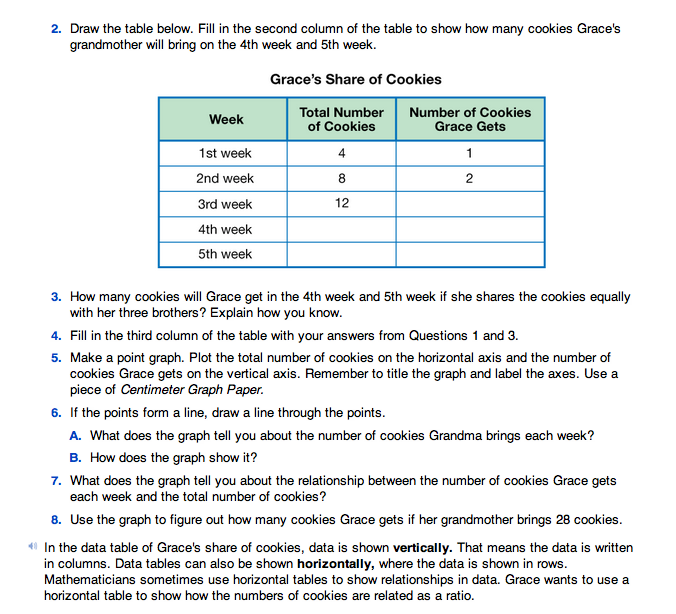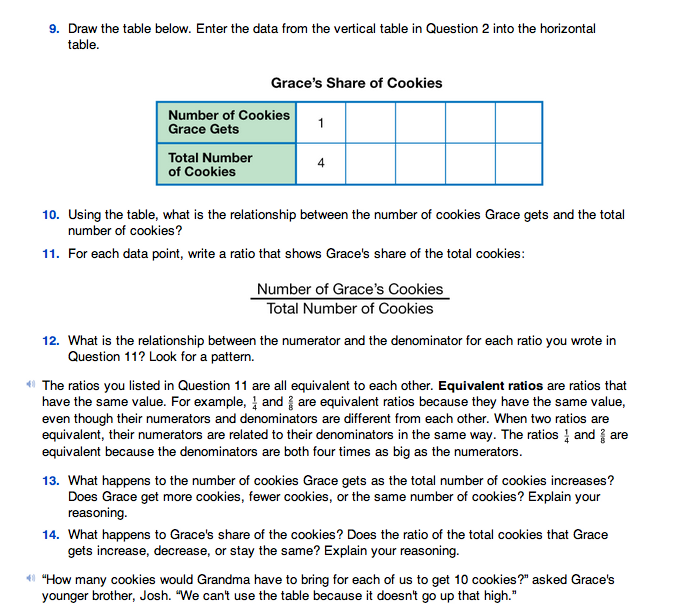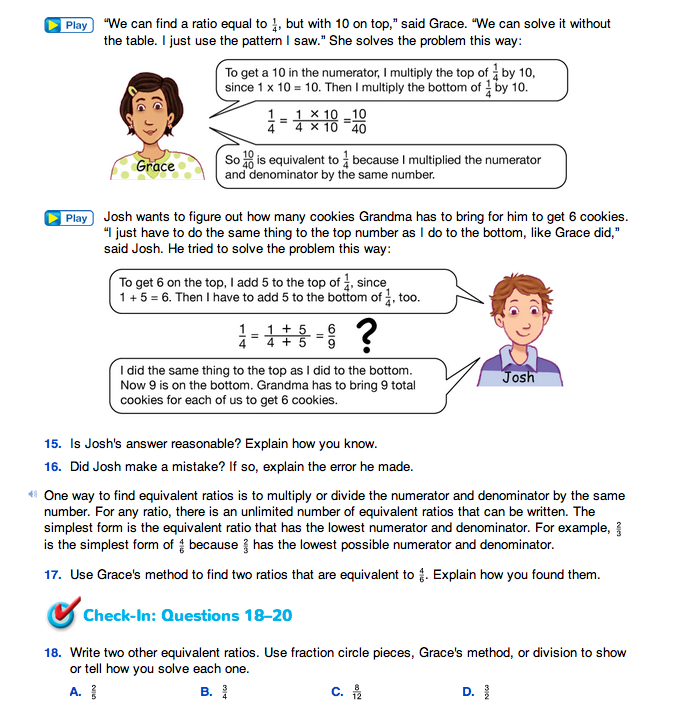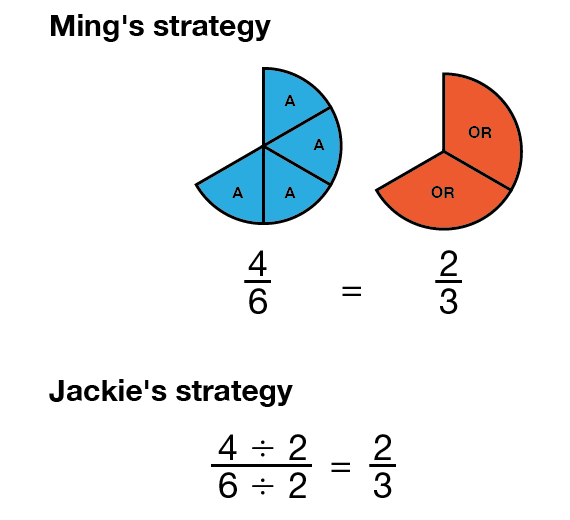Equivalent Fractions and Ratios
Est. Class Sessions: 3Developing the Lesson
Part 2: Finding Equivalent Ratios
Read the opening vignette in the Equivalent Fractions and Ratios pages in the Student Guide with the class.
Ask:
Students discuss Questions 1–4 in small groups. Students can continue a pattern of repeated addition to complete the second column of the table “Grace's Share of Cookies.” They can use patterns or simple division to compute Grace's share in the third column of the table. In Questions 5–6, students make a point graph of the data in the table and draw a line through the points. They use the graph to make predictions about the relationship of Grace's share to the total number of cookies in Questions 7–8.
In Question 9, students re-write the table horizontally instead of vertically. This helps students make the visual connection between the data table and the fractional relationship between Grace's share of cookies and the total cookies in Question 10. For Questions 11–14, students write the data points as fractions and look for patterns. In Questions 13–14, they show the difference between equivalence of whole-number quantities and equivalence of fractions. The number of cookies Grace gets increases each week, whereas the fraction of the total she gets remains the same because the numerator and denominator are both increasing by the same ratio. This is an important aspect of fractions to be emphasized with students.
Methods for Finding Equivalent Fractions. Read Grace's and Josh's methods for finding equivalent ratios with the class. In Questions 15–16, students should recognize that Josh's method is incorrect. Ask questions like those in the sample dialog.
Students practice finding equivalent ratios in Questions 17 and 18. Encourage students to find equivalent ratios by using fraction pieces, multiplying the numerator and denominator by the same number, and dividing the numerator and denominator by the same number.


















